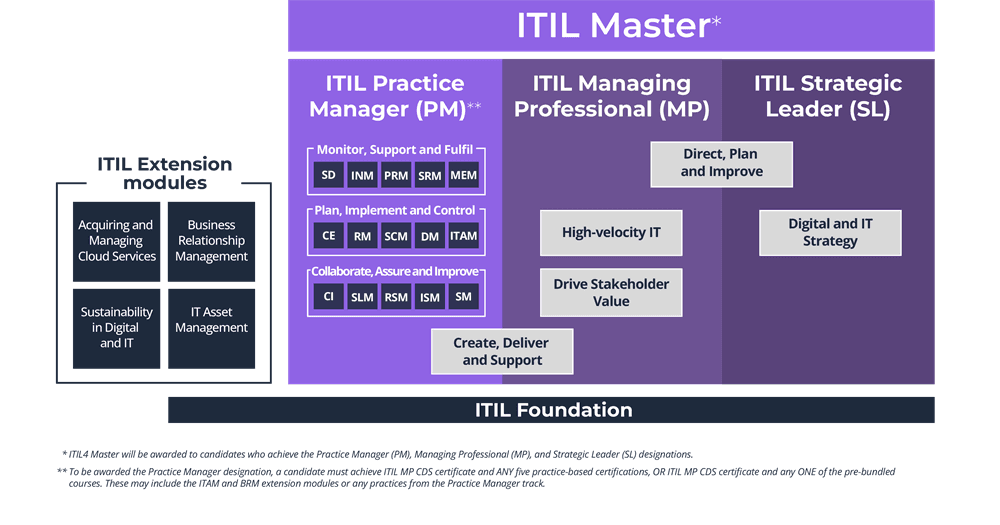What is ITIL 4?
ITIL 4 is a Best Practice Framework used by many organizations worldwide to meet the challenges of the digital age while continuously optimizing IT service management.
The purpose of ITIL 4 is to give organizations a practical and flexible foundation that they can leverage on their journey to the new world of digital transformation, as it will help them align their human, digital and physical resources to compete in the complex modern landscape.

ITIL Certification Scheme

